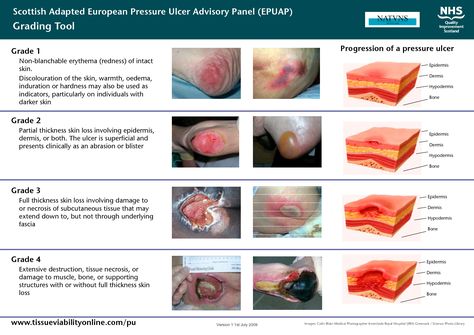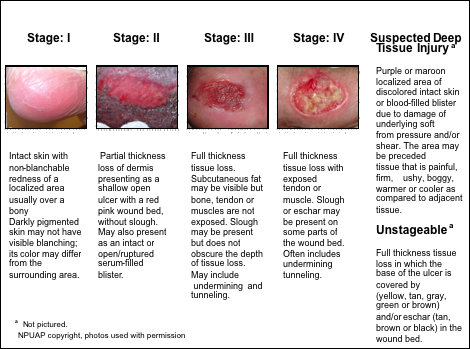What Are the Common Pressure Sore Causes?

Pressure sores are caused by friction, moisture, and pulling on the skin. They can be prevented by frequent repositioning and meticulous care of the affected area. Symptoms of a pressure sore can include pain, a change in color, black or green tissue, and fever. If you suspect a pressure sore is bacterial, see a doctor as soon as possible. If the sore is not curable, it may be a sign of cellulitis, a potentially life-threatening infection.
Pressure sores are painful and can be difficult to treat. They usually appear in the upper layer of skin. They are characterized by discoloration that can range from blue to purple, are itchy, and feel warm to the touch. The skin around the sore can be darker than the surrounding skin. Unlike other sores, the red area of a pressure sore does not get lighter when pressed. This is because the outer layer of skin does not receive enough blood.
People who are in one position for long periods of time are susceptible to developing pressure sores. Because the skin is more vulnerable to developing pressure sores, it decreases the blood flow to those areas. A bed sheet can pull up the sheets and rub against the sore, while a chair’s sheet can press against the skin. Common pressure sore sites are the buttocks, heels, and elbows. Those affected are more likely to develop a sore if they are undernourished.
Although bedsores may not always appear obvious, they are still red. The first signs of bedsores are often red rings or spots on the body. During this period, the area should be closely monitored for signs of pressure sores. If an ulcer is not treated properly, it can become infected. And if left untreated, it can become infected.
Bedsores can be caused by prolonged sitting or bed rest. As a result, the skin dies and becomes susceptible to infection. It can also happen when a person is comatose or paralyzed. A medical blog https://sobreincendios.com/blog/

states that those under the influence of sedatives or restraining agents are at higher risk of developing pressure sores. They may need a quality chair. Even with a bed, you should use a quality mattress.
A healthy diet is critical in treating bedsores. This will help the wound heal faster and avoid complications such as infections. A nutritious diet is essential to reduce malnutrition and promote wound healing. If you are at risk for pressure sores, be sure to check your skin frequently. If you have pain, it will likely get worse if you don’t follow a clean diet. Make sure you consume plenty of foods rich in vitamins and minerals.
If you spend a long time in bed, you may slip. Although a chair will help you get up, it will make it more difficult for you to get up again. This means the bedsore will stay there longer. It will be difficult to get up without assistance, so it is important to take painkillers every few hours. If the bedsore becomes too severe, you may need surgery to remove it.
A pressure sore may develop due to a number of different causes. It can be caused by trauma, chemical burn, or trauma. For those with a medical condition, pressure sores can be caused by a variety of factors, including genetics. For example, certain types of blood are more sensitive to pressure than others. For this reason, the body’s immune system will try to fight back by releasing toxins that cause severe inflammation.
Another possible cause of pressure sores is poor hygiene. If you have incontinence, you should practice good hygiene and avoid moisturizing your skin. If you have a dry, damp skin, you’re more likely to develop a pressure sore. You should also make sure your healthcare provider is aware of any potential risks. If you notice any of these signs, contact a healthcare provider immediately. They will be able to help you determine whether or not you have a pressure sore.